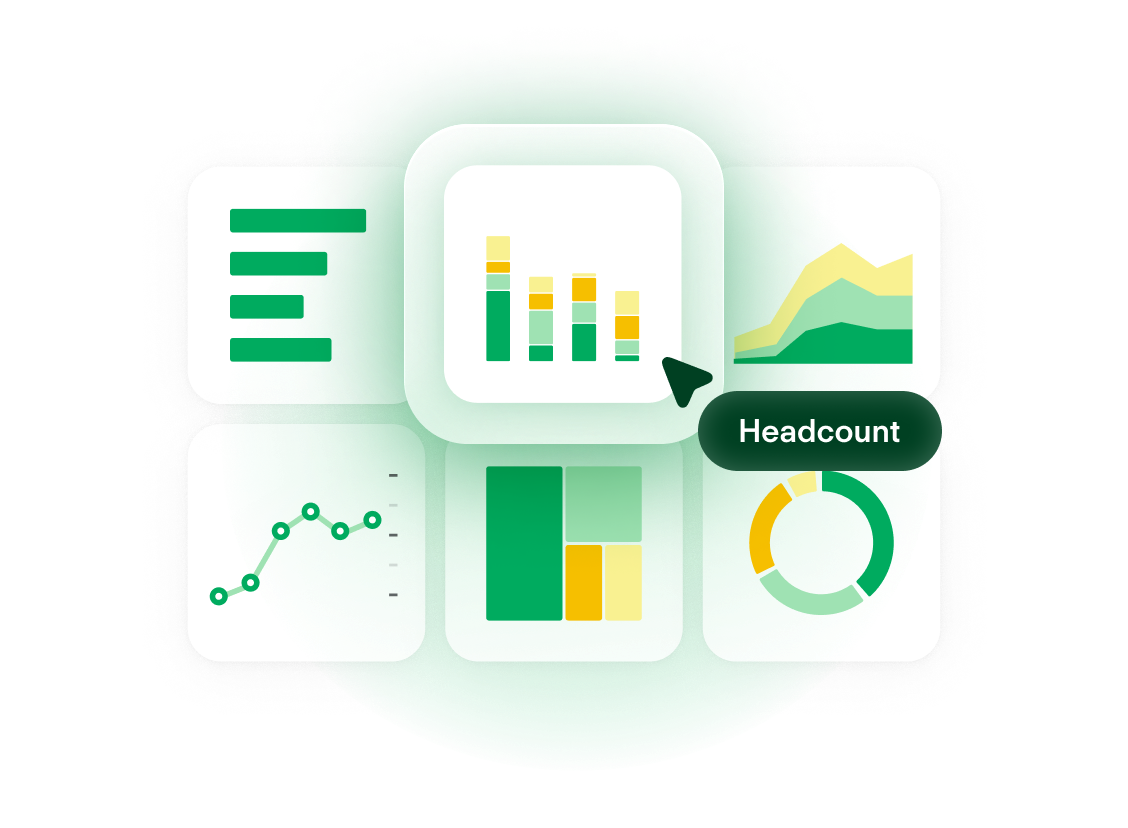
Turn data into strategic insights.
Enable proactive decision-making with People Analytics.
Create reports in seconds19. August 2021
Hello PersonioFlex: How We Developed Our Hybrid Work Model

How do you foster a sense of community between team members who don’t see each other every day? What kind of spaces serve hybrid work the best?
Implementing a hybrid work model not only requires a coherent model, but so many more considerations (employee trust and empowerment, communication and knowledge sharing, scaling culture, asynchronous work, and more). So, how does one even start?
In this article, I want to provide some insights into how we developed our own PersonioFlex hybrid work model while showing and emphasising the key principles you can’t forget to implement. Enjoy! – Ross Seychell, Chief People Officer at Personio
Automate your attendance tracking processes with Personio today.
Simply A Trend? No, A Transformation
Ultimately, the only constant in life is change. To prove that point, all you have to do is take a look at how the ways we work have changed since the pandemic began.
Office work initially became working from home. When travel became possible again, mobile working (or ‘smart working’) increased. Now we’re transforming again: Hybrid work is here.
According to a recent survey by Robert Half, 86% of executives in the United Kingdom consider hybrid workplace models mandatory. Employees see things similarly: 83% of them prefer a hybrid model in which they can work remotely for at least a quarter of their overall hours.
But, Does Hybrid Work Make Sense For Business?
At Personio, we already had fairly flexible working hours prior to Covid-19, even if they were more informal and team-dependent.
During the ‘working-from-home phase’ of the pandemic, we found that flexibility was good for us: We continued to grow, expanding our team while developing new products.
We attribute this to the idea that, because our employees were able to work more to their preferences, they were more productive and effective in their own work.
Hybrid Work Can Lead To Company Success
Increased productivity across unique working styles
More employee engagement through empowerment
Greater loyalty to the employer
Improved employer branding
Cost savings on office rent, electricity, water, etc.
So, with PersonioFlex, we wanted to combine the best of both worlds. Our hybrid model is based on both our culture and the needs of our employees: Do you need peace and quiet to properly focus? Or, is collaboration more in the cards?
This freedom of choice is important: 42% of employees across Europe say they are open to a new job in the next six to twelve months – according to our latest HR study. When we act with respect to our team’s needs, we motivate and empower our employees and boost their loyalty.
For the full results of our latest HR study, click here to gain access.
PersonioFlex: How We Developed Our Hybrid Model
With PersonioFlex, we really wanted to push the boundaries. So, the first thing we did was look at existing regulations and laws surrounding remote work: What was going to be our scope?
The next step was to identify needs within the company, broken down by country, location, department, team, and project group. Now, we not only had a scope, but we were able to take into account specific needs.
Is your company ready for hybrid work? Click here to find out.
How PersonioFlex Works
Personio Office: Here we work about 50% of the time in the office (give or take a little) and the rest of the time remotely – in any way that works best for employees and their teams.
Remote Work: This can be done by our team whether working from their home office or at another location in their home country. Team members can work in a focused way and pass on the commute to work.
Remote International: Phased work abroad after consultation with their respective supervisor, for example, to stay a little longer after vacation and get to know the work culture in another country.
The main way I would look to describe our hybrid working model would be “office-led but remote-friendly,” with individuals teams even working completely remotely.
But, for us, a completely remote model was out of the question. That’s because collaboration, whether professional or small talk around the coffee machine, helps build a sense of community and pays off for our culture. And that, in turn, is foundational to our success.
Three Tips To Develop Your Own Hybrid Work Model
So, now you know more about our journey and what we’ve developed here at Personio.
In addition to that, here are my three tips for anyone looking to develop a hybrid work model for their own organisation:
1. Incorporate Culture & Vision: Don’t follow trends blindly and embed a hybrid work model into your overall corporate culture. Make sure it is in line with your goals and operating principles so that it will work on a long-term basis.
2. Get Input: First, ask different colleagues, teams, and departments. Set a point at which you’ve got enough feedback (otherwise you’ll just get into a never-ending loop). Second, share with other companies and gather best practices.
3. Take Time: What we really wanted to avoid was copying a model and running with it immediately. Not only is that not our style, but it’s not in keeping with our operating principle of #BeDiligent. A model should fit your unique organisation, so invest time in working it out and doing it right.
How Do You Implement A Hybrid Working Model?
You’ve implemented a hybrid work model – now you can sit back and relax, right? Unfortunately, the real work is now kicking off. Successfully integrating a hybrid model into your company’s day-to-day operations is truly the lion’s share of the work.
Here are three steps you should keep in mind…
1. Prepare Your Managers
Leading hybrid employees is no small task. That’s why you should offer your managers training when the time comes. This will help them lead teams smoothly and find a working model that meets the needs of their teams and departments.
2. Communication & Documentation
Clear communication and clean documentation are also important. It can help answer critical questions like:
Who is allowed to work where and when? For how long?
What is important for longer stays abroad?
Which documents are necessary?
In our case, we have bundled all information – including data protection – in a central location for our employees. This way, everyone always has access to it, any time they may need it.
3. Planning Out Spaces
Our offices should support hybrid working as much as possible. To this end, we invest in audiovisual equipment such as headsets, projectors, and so on.
Nowadays, there are fewer individual desks or rooms reserved for specific departments and, instead, more meeting rooms, places for collaboration, and “phone booths” for undisturbed calls and conversations.
Hybrid Work: It’s Here To Stay
In my opinion, I believe that flexible, hybrid working models are the future of work. It is our responsibility, as HR professionals, to give our employees the space to work productively and creatively – and in line with their own working style.
Similarly, HR managers also need to place focus on HR digitisation. After all, the more flexible teams work, the more they rely on integrated, digital processes that enable focused work from just about anywhere. This takes work off their hands and creates precisely the space they need for truly innovative thinking.

About Ross Seychell
As a business leader with 20 years of HR experience, I have a strong passion for how a company’s most important asset – their people and culture – enables them to unlock and achieve their mission. After building out workplace strategies at high-growth companies such as Wise and King, I joined Personio as Chief People Officer to help us become the leading HR platform and tech employer in Europe.
Pave The Way For HR To Shine

